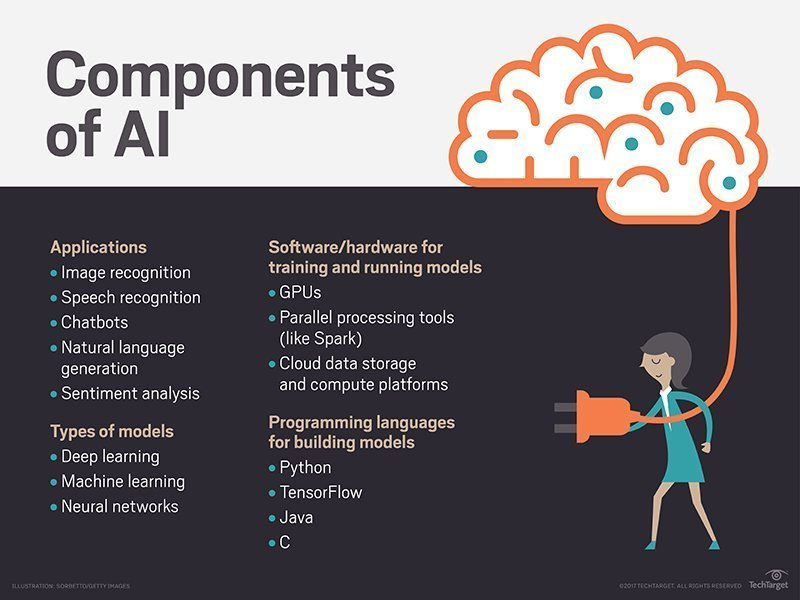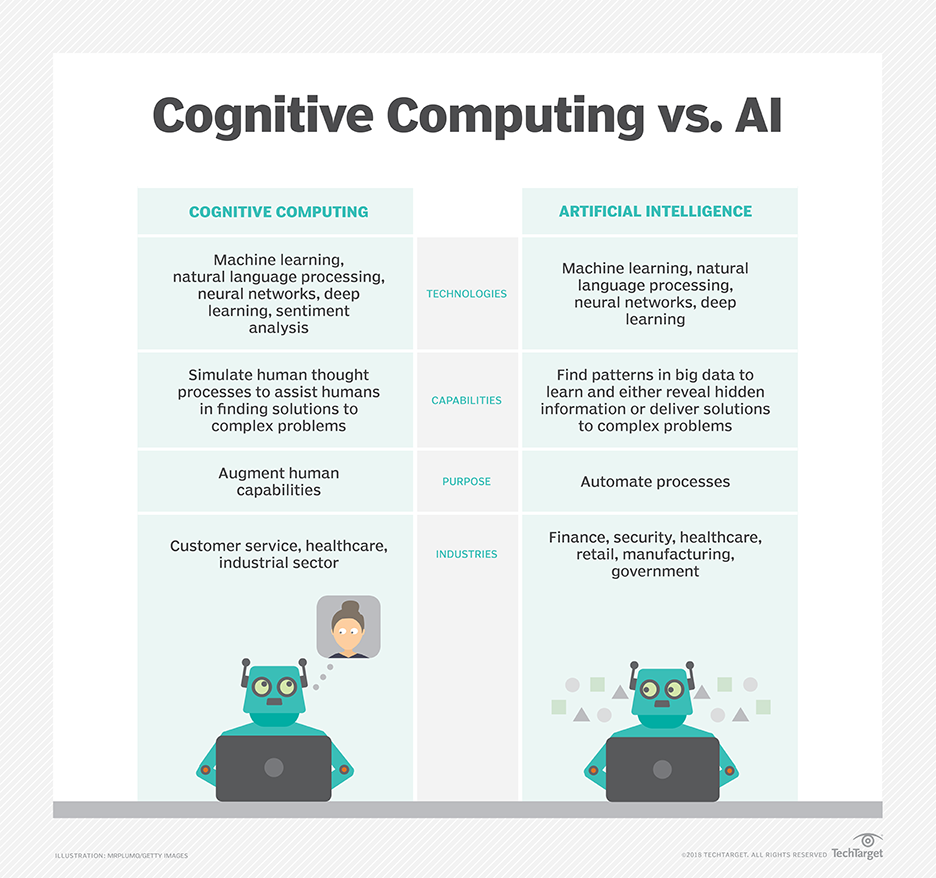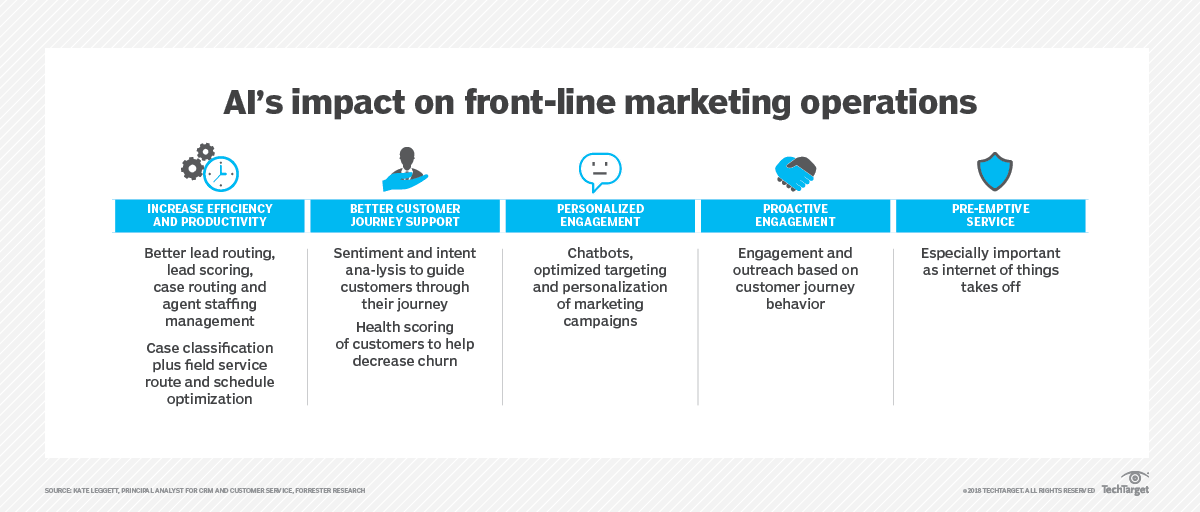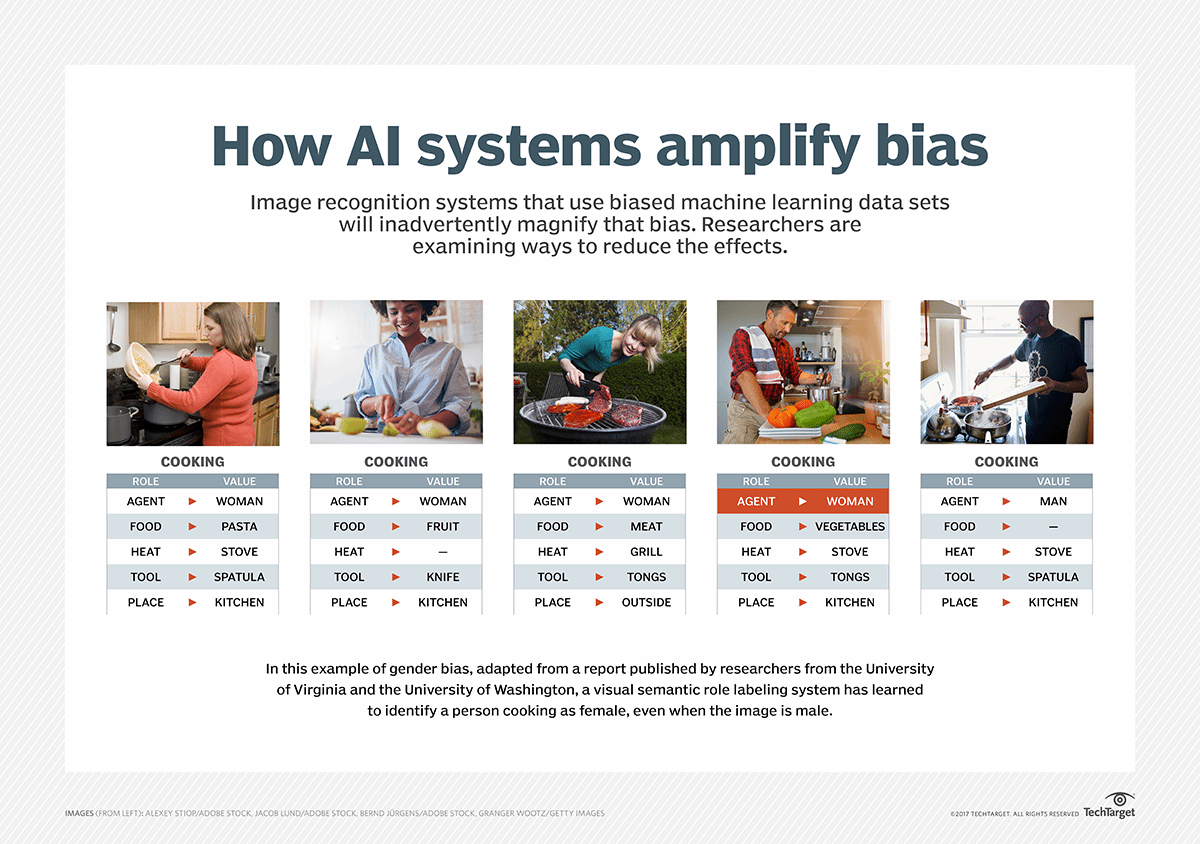What is artificial intelligence (AI)? What are its Applications and Risks?
Artificial intelligence can be classified as either weak or strong:
- Weak AI: Also known as narrow AI, is an AI system that is designed and trained for a specific task only. For example, “virtual personal assistants,” such as Apple Siri (the voice command system for Apple devices), are considered a form of weak artificial intelligence.
- Strong AI: Also known as artificial general intelligence, it is an artificial intelligence system with generalized human cognitive capabilities When presented with a previously unfamiliar task, a powerful AI system is able to find a solution without human intervention.
Because the hardware, software, and personnel costs of AI can be expensive, many vendors include AI components in their standard offerings, in addition to access to “AI as a cloud” (AIaaS) platforms. AI as a Service (AIaaS) cloud systems allow both individuals and businesses to experiment with using AI for different business purposes and on many platforms before purchasing the service. The most famous companies that provide cloud AI services:
- Amazon AI services.
- IBM Watson Assistant .
- Microsoft Cognitive Services.
- Google AI Services.
While AI tools offer a range of new functions for businesses, the use of AI raises ethical questions. This is because "deep learning " algorithms , which power many of the most advanced AI tools, are only as smart as the amount of data they are fed during training. Since humans choose what data to use to train an AI program, the potential for human bias is inherent and must be closely monitored.
Some industry experts believe that the term “AI” is too closely associated with popular or popular culture, causing the general public to have unrealistic fears about AI, and unrealistic expectations about how AI will change the workplace or even change lives in general. Researchers and marketers hope that through the concept of “augmented intelligence,” which has a more neutral connotation, it will help people understand that “AI” will simply improve products and services, and that AI is not a replacement for the humans who use it.

Types of artificial intelligence:
Arend Hintz , assistant professor of integrative biology and computer engineering science at Michigan State University, classifies artificial intelligence into four types, ranging from the type of AI systems that currently exist to those that do not yet exist. Its categories are as follows:
- The first type, Reactive machines : An example of this is the Deep Blue computer , the chess program from IBM that beat Garry Kasparov in the 1990s. Deep Blue can recognize the pieces on a chess board and make predictions, but it has no memory and therefore cannot use past experiences to inform and teach future experiences. He analyzes the possible moves - his and his opponent's - and chooses the most strategic move. Both Deep Blue and Google's AlphaGO were designed for narrow, specific purposes, and cannot be easily employed in areas other than those for which they were designed.
- The second type, Limited Memory : These artificial intelligence systems can use past experiences to guide and teach future decisions. Some of the "decision-making" functions in self-driving cars are designed this way. In this type, “observations” report actions that occur in the near future, such as changing lanes for a car. These notes and observations are not stored permanently
- The third type, Theory of Mind : This psychology term refers to the understanding that others have their own beliefs, desires, and intentions, all of which influence the decisions they make. This type of artificial intelligence does not yet exist
- Type 4, Self-awareness : In this category, artificial intelligence systems have a sense of self and also have self-awareness. Machines with self-awareness understand the current state they are in, and can use this information to infer what others are feeling. This type of artificial intelligence does not yet exist either

Examples of artificial intelligence techniques:
Artificial intelligence has been integrated into a variety of different types of technology. Here are seven examples:
- Automation: What makes a system or process work automatically. For example, Robotic Process Automation (RPA) can be programmed to perform high-volume, repeatable tasks that would normally be performed by a human. RPA differs from IT Automation in that it can adapt to changing circumstances
- Machine Learning: It is the science that enables a computer to work and behave without programming. In fact, Deep Learning is a subset of Machine Learning, which in very simple terms can be considered the automation of “predictive analytics.” There are three types of machine learning algorithms:
- Supervised Learning: Data sets are labeled so that patterns can be discovered and used to classify new data sets
- Unsupervised Learning: Data sets are not labeled, but rather arranged according to similarities or differences
- Reinforcement Learning: Data sets are not labeled, but after performing an action or several actions, the AI system is given feedback
- Machine Vision: The science of allowing computers to see. This technology captures and analyzes visual information using several tools: a camera, a digital-to-analog converter, and a digital signal processor. It is often compared to human vision, but machine vision is not tied to biology (as in humans), and can be programmed to see through walls. For example, machine vision is used in a range of applications from human signature recognition to medical image analysis. Computer Vision, which focuses on machine-based image processing, is often associated with Machine Learning
- Natural language processing (NLP - Natural language processing): This is the processing of human - not computer - language using a computer program. One of the oldest and most famous examples of "natural language processing" is the detection of unwanted emails, or what is called spam or junk, where the program looks at the subject line of the message and also at the body of the email message and decides whether it is junk mail. Current methods in Natural Language Processing are based on Machine Learning. Natural language processing tasks include text translation, sentiment analysis, and speech recognition.
- Robotics: A field of engineering that focuses on the design and manufacture of robots. Robots are often used to perform tasks that are difficult for humans to do or do consistently (with the same regularity and accuracy). They are used in production lines to assemble cars or by NASA to transport large objects into space. Researchers are also using machine learning to build robots that can interact in social environments.
- Self-driving cars: They use a combination of computer vision, image recognition, and deep learning to build automated skill in driving a vehicle while remaining in a driving lane ( Driving Lane) and avoiding unexpected obstacles, such as pedestrians.
Artificial intelligence applications:
Artificial intelligence has made its way into a number of arenas and fields. Here are six examples:
- Artificial intelligence in healthcare (AI in healthcare): The biggest bets in the field of artificial intelligence are in improving patient outcomes and reducing costs. Companies are applying machine learning techniques to make diagnoses better and faster than humans. One of the most popular healthcare technologies is IBM Watson. This computer system understands natural language and is able to answer the questions asked. It mines patient data system and other available data sources to form a hypothesis, which it then presents with a confidence scoring chart. Watson includes other “AI” applications such as “Chatbots,” a computer program used online to answer questions and assist customers, to help schedule follow-up appointments or assist patients through the billing process, and “Virtual Health Assistants” that provide... Basic medical notes.
- Artificial Intelligence in Business (AI in business): Robotic process automation is applied to highly repetitive tasks typically performed by humans. Machine learning algorithms are integrated into analytics and customer relationship management (CRM) platforms to reveal information about how to better serve customers. Chatbots are integrated into websites to provide instant service to customers. Automation of job positions has become a point of discussion among academics and IT analysts.
- Artificial Intelligence in Education (AI in Education): AI can automate the educational grading system and thus give teachers more time. Artificial intelligence can assess students, adapt to their needs, and help them work on their own. AI tutors can provide additional support to students, ensuring they stay on track. AI could also change where and how students learn, perhaps even replacing some teachers.
- Artificial intelligence in finance: The use of artificial intelligence in personal finance applications, such as Mint or Turbo Tax, is disrupting financial institutions. Apps like this collect personal data and provide financial advice. Other software, such as IBM Watson, has been used in the home buying process. These days a lot of trading on Wall Street is done by software.
- Artificial Intelligence in Law: The process of discovery by carefully sifting through documents in law is often very tiring for humans. Automating this process is a more efficient use of time. Startups are also building computer-generated “question-and-answer” assistants that can sort the questions for use in the answering process by examining taxonomy and ontology using a linked database.
- Artificial Intelligence in Manufacturing (AI in manufacturing): This field is considered the first field in which robots were integrated into manufacturing processes. Industrial robots are used to perform individual tasks and have been separated from human workers, but as technology advances, this is changing.
Safety and ethical concerns:
The application of artificial intelligence in the world of self-driving cars raises security as well as ethical concerns. Cars can be hacked, and when a self-driving car gets into an accident, liability is unclear. “Self-driving” vehicles can also get into a situation where an accident is unavoidable, forcing the programming to make an ethical decision about how to minimize the damage
Another major concern is the potential for misuse of AI tools. Hackers have begun to use sophisticated machine learning tools to gain access to sensitive systems, complicating security beyond its current state
Deep learning-based video and audio creation tools also provide bad actors with the tools to create so-called deepfakes , where they can create very convincingly fabricated videos of famous public figures appearing to say or do things that never happened. .
Regulation of artificial intelligence technology:
Despite these potential risks, there are few regulations governing the use of AI tools, and where laws exist, they are usually only indirectly related to AI. For example, federal fair lending regulations require financial institutions to explain credit decisions to potential customers, which therefore limits the extent to which lenders can use “deep learning” algorithms, which are inherently opaque. The European General Data Protection Regulation places strict limits on how organizations can use consumer data, hampering training and jobs in many consumer-facing AI applications.












0 Comments